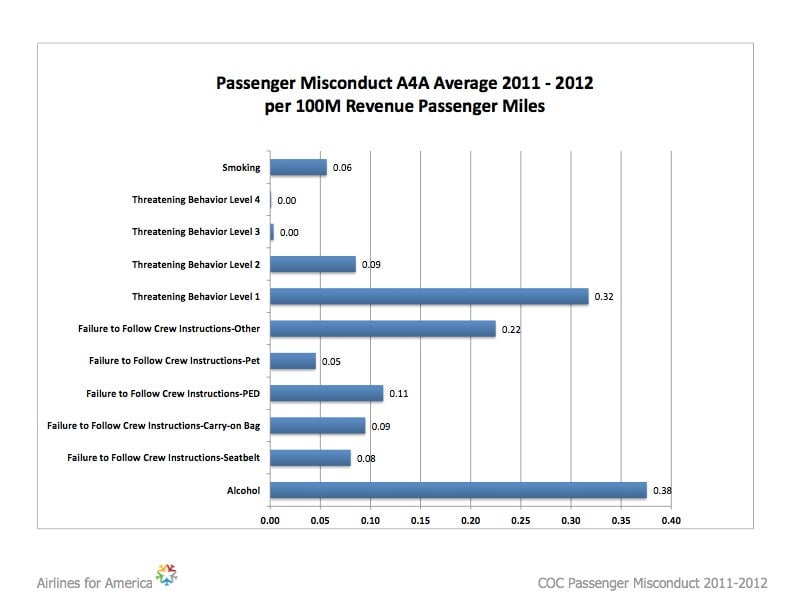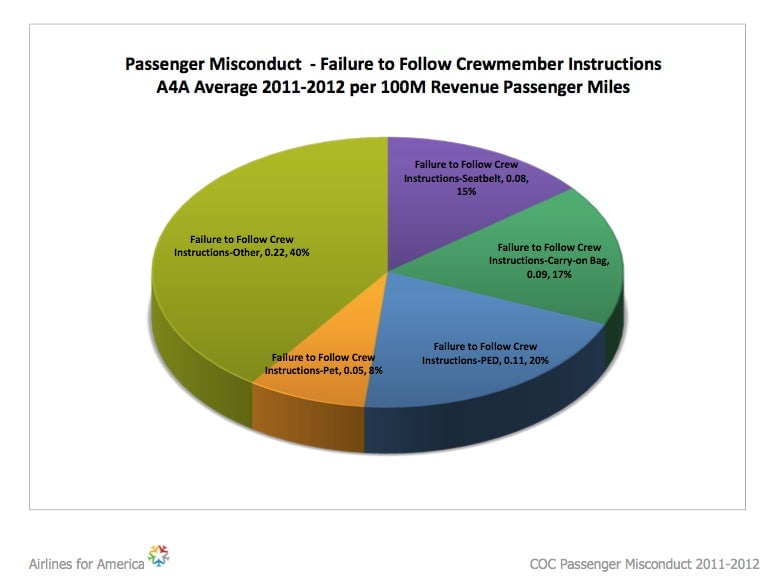Blame booze and uppity passengers for your next delayed flight
Along with the FAA’s relaxation of rules on the use of digital devices on US airlines came a hefty and dense 222-page report that the committee behind these rules put together. Besides laying out the case for the new landscape, it also has two charts that the main airline lobbying organization Airlines For America supplied to the committee and make for an interesting read.


Along with the FAA’s relaxation of rules on the use of digital devices on US airlines came a hefty and dense 222-page report that the committee behind these rules put together. Besides laying out the case for the new landscape, it also has two charts that the main airline lobbying organization Airlines For America supplied to the committee and make for an interesting read.
The two charts show the data on the various forms of passenger misconduct on US airlines, and their frequency, at least the reported ones. The most common type is passengers who have had too much alcohol, either on the flight, or before they boarded. (PED in the charts below refers to personal electronic device.)
Another major category is failure to follow crew instructions, and two subsets—not putting on a seat belt and failure to put away the bags—are the most common.
Then there’s the Threat Level 1, what we commonly know as “air rage” and the many infamous incidents that get tons of media coverage around the country. This is the second most popular type of misconduct that at times has led to costly flight diversions in the US.
It would be instructive to track the growth of this category over time, and the rise of air rage as the airlines become more and more packed, especially in economy. With more relaxed digital device use onboard in the US, will it create new forms of behavior and possible misconduct, or will it lead to more occupied and hence less unruly passengers?


And this isn’t just a US-focused issue. IATA, the main international airline trade group, issued its first ever “Guidance on Unruly Passenger Prevention and Management” guideline (pdf) in December last year, with detailed definitions and instructions for airlines and training of crew:
Definitions: